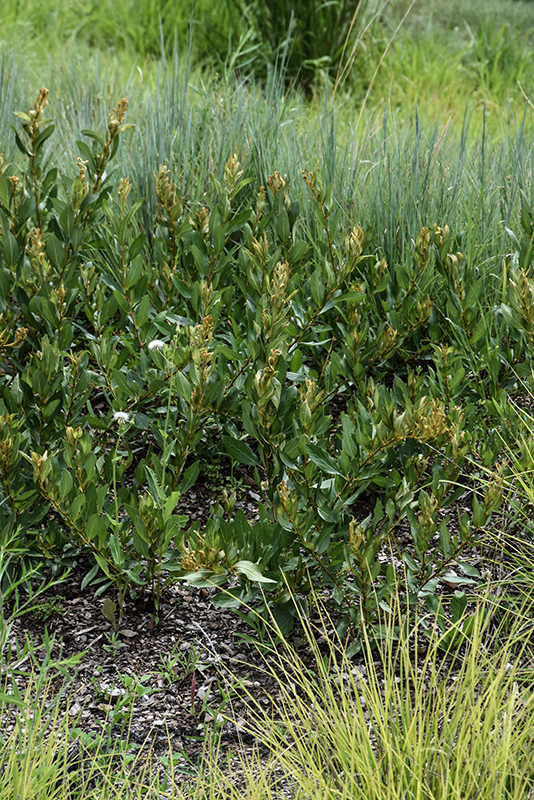Height: 3 feet
Spread: 24 inches
Sunlight:
![]()
Hardiness Zone: 4a
Other Names: Prairie Redroot
Description:
A small, upright shrub with shiny green elliptic foliage; clusters of small, fragrant white flowers appear from mid-spring to early summer; perfect for borders and rock gardens; very hardy and drought tolerant once established
Ornamental Features
Inland New Jersey Tea features showy clusters of fragrant white flowers at the ends of the branches from mid spring to early summer. The flowers are excellent for cutting. It has attractive green foliage with grayish green undersides. The glossy pointy leaves are highly ornamental but do not develop any appreciable fall color. It produces dark brown capsules from late summer to early fall, which fade to black over time. The brick red stems can be quite attractive.
Landscape Attributes
Inland New Jersey Tea is a dense multi-stemmed deciduous shrub with an upright spreading habit of growth. Its average texture blends into the landscape, but can be balanced by one or two finer or coarser trees or shrubs for an effective composition.
This is a relatively low maintenance shrub, and should only be pruned after flowering to avoid removing any of the current season's flowers. It is a good choice for attracting birds, bees and butterflies to your yard. Gardeners should be aware of the following characteristic(s) that may warrant special consideration;
- Spreading
Inland New Jersey Tea is recommended for the following landscape applications;
- Mass Planting
- Rock/Alpine Gardens
- General Garden Use
- Groundcover
- Naturalizing And Woodland Gardens
Planting & Growing
Inland New Jersey Tea will grow to be about 3 feet tall at maturity, with a spread of 24 inches. It tends to fill out right to the ground and therefore doesn't necessarily require facer plants in front. It grows at a medium rate, and under ideal conditions can be expected to live for approximately 30 years.
This shrub should only be grown in full sunlight. It prefers dry to average moisture levels with very well-drained soil, and will often die in standing water. It is considered to be drought-tolerant, and thus makes an ideal choice for a low-water garden or xeriscape application. This plant is capable of fixing its own nitrogen, which means that it is effectively self-fertilizing. As a result it should not require supplemental fertilizing, and if you do fertilize it, be sure to only use a low-nitrogen fertilizer to promote root growth. It is particular about its soil conditions, with a strong preference for sandy, alkaline soils. It is highly tolerant of urban pollution and will even thrive in inner city environments. This species is native to parts of our region.
